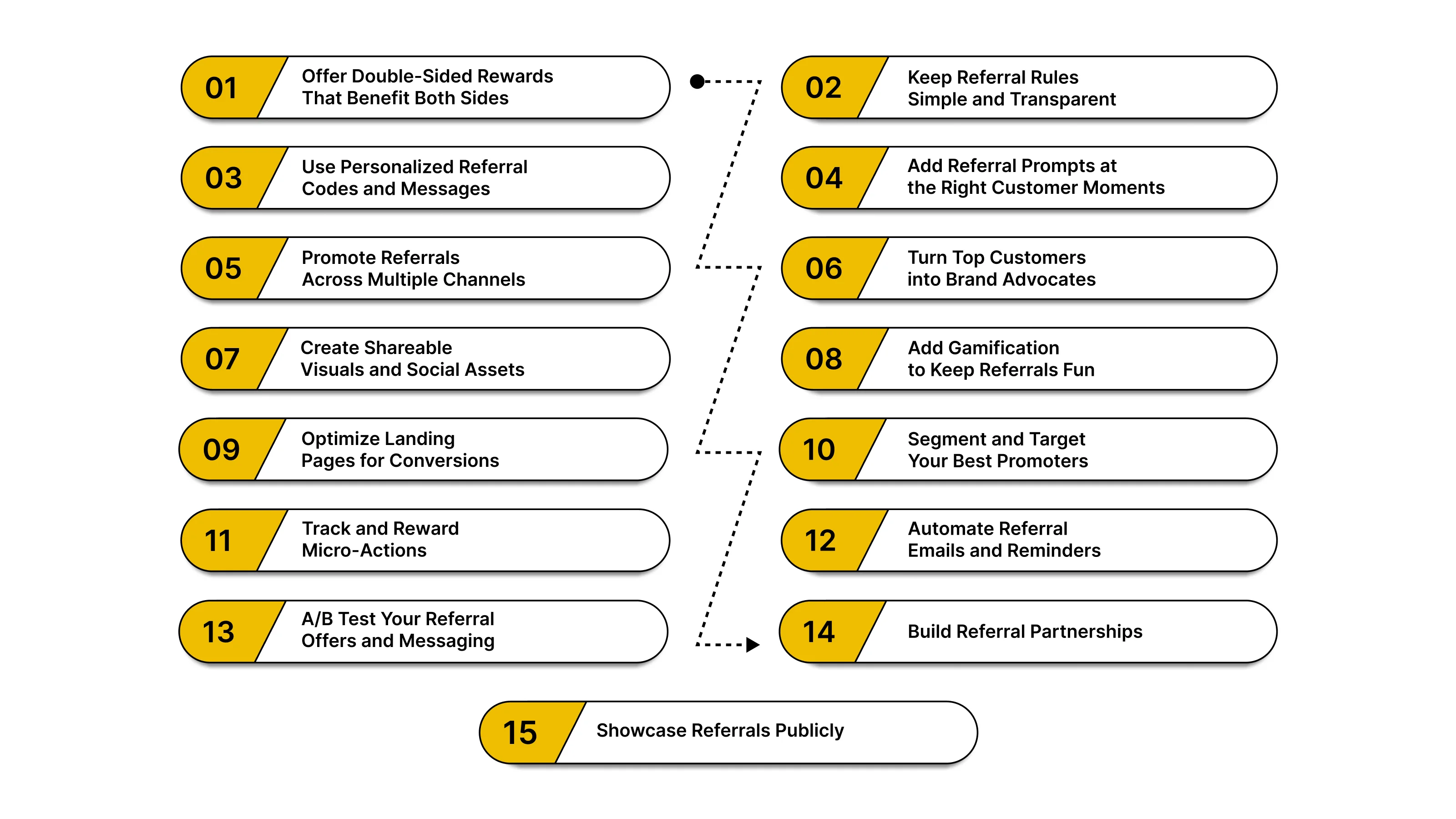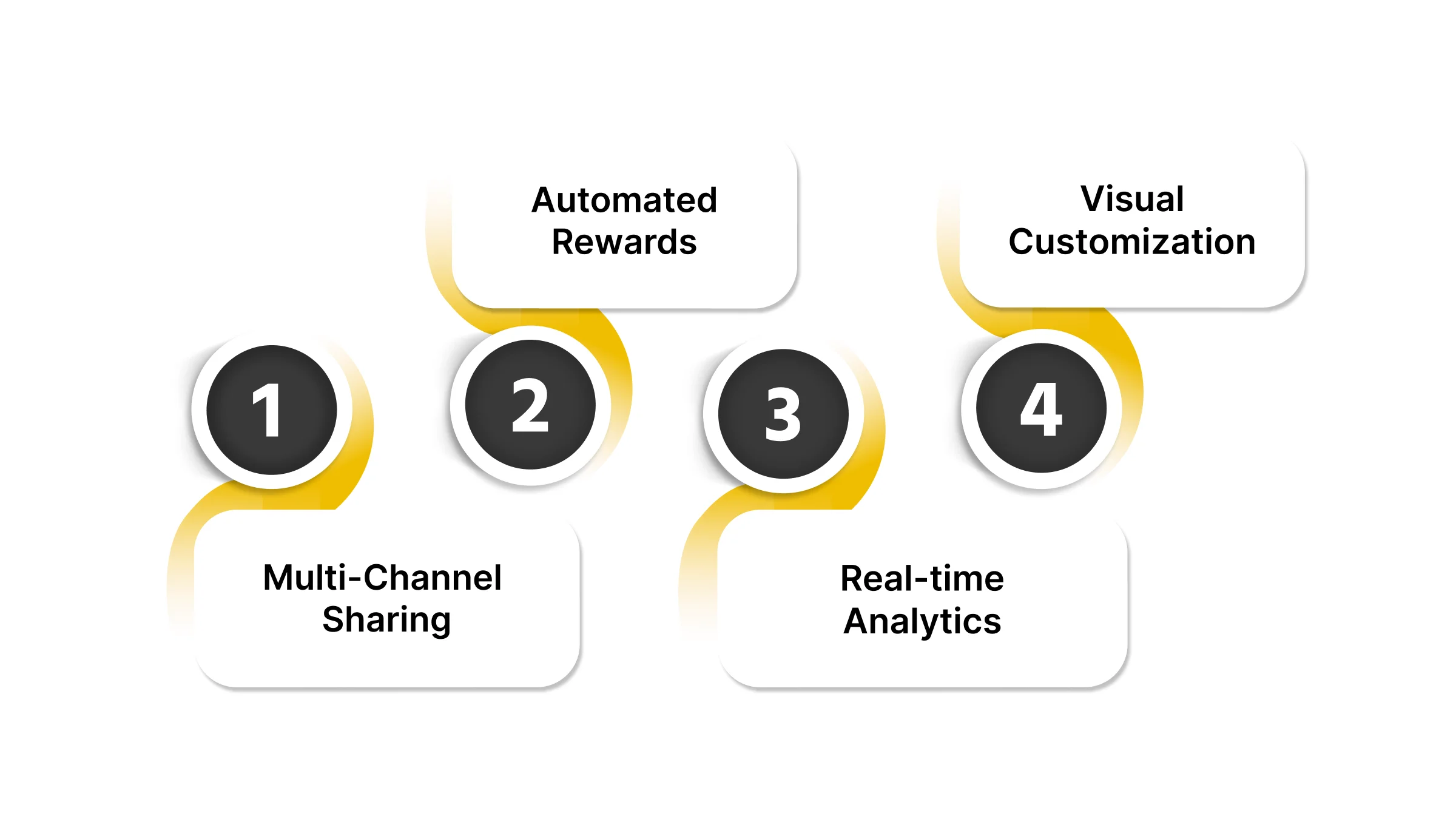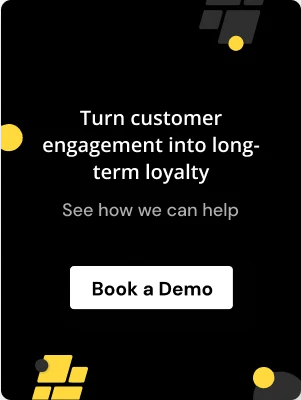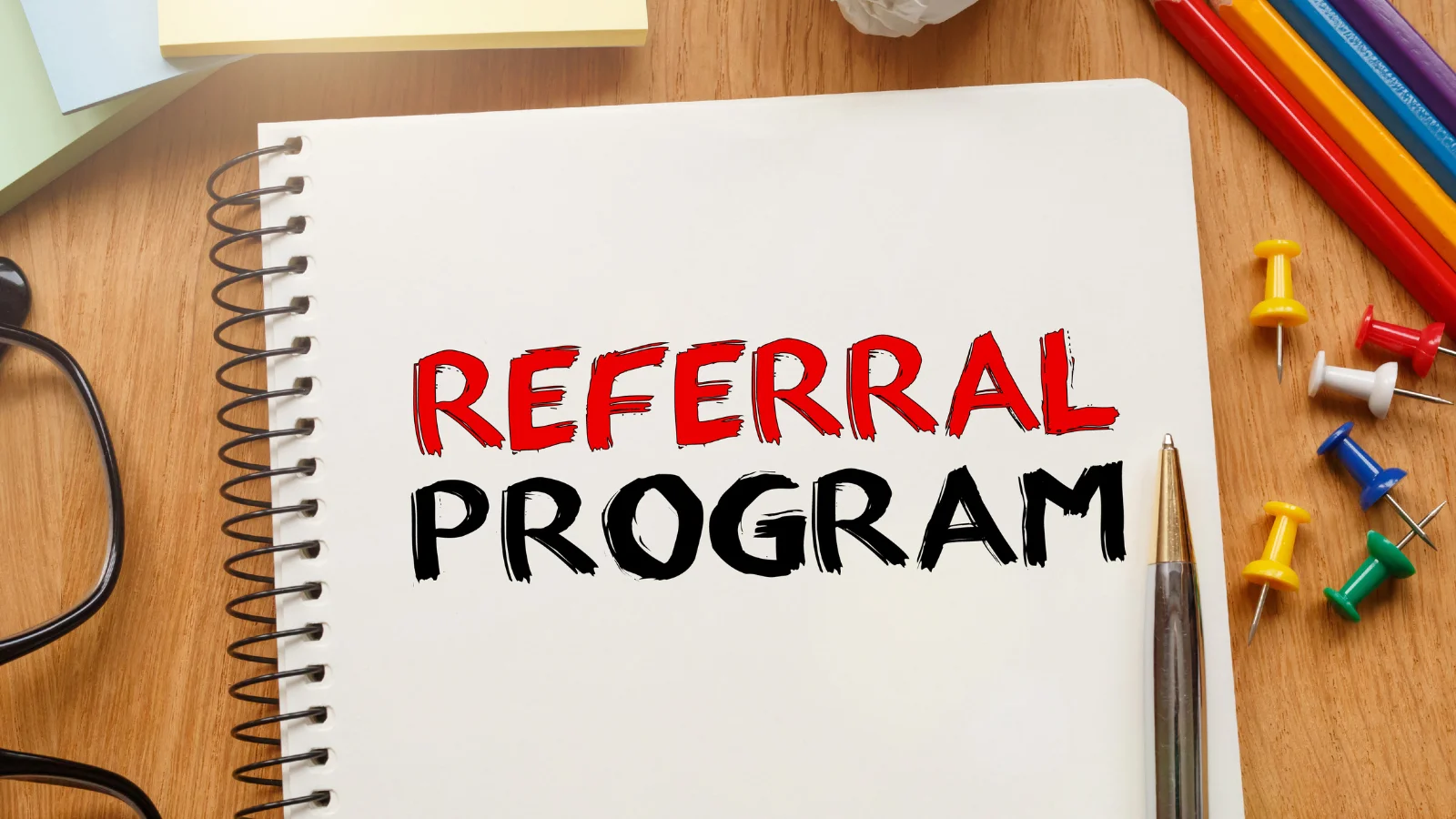.avif)
.avif)
Are your happy customers sharing your brand, or just staying silent? For many e-commerce stores, referrals are a goldmine hiding in plain sight. You already have satisfied customers who love your products, but without the right systems in place, their word-of-mouth potential never turns into measurable growth.
According to Shopify’s Referral Program Guide (2025), referrals are twice as likely to convert as leads from paid channels like social media or TV ads. This happens because referred customers arrive with built-in trust. In fact, 86% of consumers say recommendations and reviews influence their purchase decisions, while only 2% rely on traditional ads.
In this blog, we will explore 15 proven strategies to help you increase referral traffic. You will learn how to use smart incentives, automation, and personalization to build a sustainable referral engine.
Before You Begin: What You’ll Learn in This Guide
- Referral traffic grows when sharing feels effortless, fair, and rewarding—not when customers need to figure out confusing rules.
- Personalized referral messages, automated reminders, and clear incentives turn happy customers into consistent brand advocates.
- Building a referral engine requires more than one campaign; it’s about consistent engagement, segmentation, and rewarding micro-actions.
- Multi-channel promotion across WhatsApp, email, and social media, keeps referrals visible where your customers already interact.
- With automation, analytics, and fraud control, platforms like Nector help you scale referrals without adding to your workload.
Why Referral Traffic Matters More Than You Think
Referral traffic isn’t just another marketing metric. It’s one of the most reliable and cost-efficient ways to grow your customer base. Unlike paid ads that lose impact the moment you stop spending, referral-driven customers arrive through trust, which makes them more likely to convert and stay loyal to your brand.
Did you know that 80% of consumers prefer brands that offer personalized experiences and spend 50% more with those brands. Referral programs tap directly into this behavior, creating a personal connection between your brand and the customer through someone they already trust.
Paid acquisition often feels like a sprint; you keep running to maintain visibility. Referrals, on the other hand, are more like compounding interest. Every new referral can bring in another, multiplying your growth without multiplying your costs.
Here’s a quick comparison to show the difference between traditional acquisition and referral-based growth:
Also Read: Loyalty vs. Referral Programs: What's the Difference and Which One Should You Use?
Understanding why referral traffic matters is the first step; next, let’s look at what might be holding your results back.
Common Reasons Your Referral Traffic Isn’t Growing

Even when your customers love your products, referral traffic can still stall. Most e-commerce brands face similar issues that block referral momentum, often rooted in program design or timing. If your referral efforts aren’t bringing steady conversions, these are the most likely causes.
Here are the most common reasons referral traffic doesn’t grow consistently:
- No simple way for customers to share links or codes
When sharing requires multiple steps, customers lose interest. A friction-heavy process like forcing users to log in or manually copy a link, kills momentum. For instance, a fashion startup that sends referral links only through post-purchase emails limits reach. Adding one-click share buttons for WhatsApp, email, and Instagram DMs can instantly make the process effortless. - Unclear or unappealing reward structure
If customers can’t immediately understand what they’ll gain from a referral, they rarely act. “Get 200 points” feels vague, while “Give $10, Get $10” provides instant clarity. Transparent, double-sided rewards create fairness and motivate both the sender and receiver to participate. - Referral prompts sent at the wrong time
Timing matters. Sending a referral email before the customer has even received their order rarely works. The ideal moment is right after a positive experience—like unboxing or leaving a good review. Automated triggers through tools such as Klaviyo or Mailchimp help send referral messages exactly when engagement is highest. - Generic or impersonal referral messages
Referral invites that read like automated marketing copy often get ignored. Personal touches like using the customer’s name or referencing their last purchase make messages feel genuine. Even small tweaks, such as personalized referral codes, increase clicks because they reflect the customer’s identity and connection to your brand.
Most referral programs fail not because the idea is bad, but because the experience feels disconnected from how real customers behave. Fixing these starts with clarity and incentives that speak directly to your audience.
Also Read: 5 Common Referral Program Mistakes (And the Best Apps to Fix Them
Ready to grow through trust, not ads? Launch your referral program with Nector today!

Once you know the common roadblocks, it’s time to explore actionable strategies to increase referral traffic effectively.
How to Increase Referral Traffic: 15 Proven Strategies That Actually Work

Here are 15 strategies that have consistently helped e-commerce brands grow referral traffic. Each one focuses on creating clarity, motivation, and convenience so that your customers actively share your brand with others.
1. Offer Double-Sided Rewards That Benefit Both Sides
Mutual rewards motivate both the referrer and the new customer to act. When both parties benefit, participation feels fair and rewarding, which increases conversions. For instance, offer “10% off for you and your friend” instead of only rewarding one side.
Examples of double-sided incentives:
- Discount for both referrer and referee (e.g., $10 off each)
- Store credits or loyalty points for every successful referral
- Free gifts or samples for both participants
These simple, equitable structures turn sharing into a win-win experience for everyone involved.
2. Keep Referral Rules Simple and Transparent
Complicated terms discourage participation. Keep the program rules short, clear, and easy to access directly from your website or referral page. Customers should know what counts as a referral, when rewards are issued, and any usage limits upfront.
Ways to improve clarity:
- Add a short “How it works” section on your referral page
- Use visual cues like progress bars or pop-ups to show referral status
- Avoid fine print that hides eligibility details
Transparency builds trust and prevents frustration, ensuring your referral program runs smoothly from start to finish.
3. Use Personalized Referral Codes and Messages
Personalized codes and messages make customers feel more connected to your brand and increase click-through rates. Instead of generic codes like “REFER10,” use first-name variations such as “SARAH10” or “MIKE20.”
Personalization ideas:
- Let customers choose their own code during sign-up
- Auto-fill referral messages with the customer’s name and product recently purchased
- Add personal notes like “I think you’d love this too” to email or text templates
A personalized approach makes sharing natural and authentic, increasing both engagement and conversion rates.
Also Read: Referral Marketing for Local Businesses: A Complete Guide
4. Add Referral Prompts at the Right Customer Moments
Referral requests work best when customers are already feeling positive about your brand. Automating these prompts ensures they appear at the right time without manual effort.
Best timing examples:
- After a successful purchase or positive delivery experience
- Immediately after a 5-star review or product rating
- When a customer hits a loyalty milestone or completes a tier
You can automate such referral triggers using tools like Klaviyo or through platforms such as Nector, which helps e-commerce stores send referral prompts right after meaningful customer interactions. Timely prompts significantly raise referral participation rates.
5. Promote Referrals Across Multiple Channels
Your customers engage with your brand through several touchpoints, not just one. Limiting your referral program to a single channel reduces visibility and participation. To maximize impact, make referrals accessible across every platform your customers already use.
Effective referral promotion channels with Nector:
- Email and SMS: Use Nector’s integrations with Mailchimp and Klaviyo to include referral CTAs in order confirmations, post-purchase messages, and automated follow-ups.
- WhatsApp and Social Media: Nector lets customers share referral links directly through WhatsApp, Instagram DMs, and other social platforms in just one click.
- On-site Pop-ups: Add referral prompts to your product or checkout pages so visitors can share your store without leaving the site.
By managing all these channels from a single Nector dashboard, you ensure consistent messaging and tracking. Multi-channel visibility means your customers can share your brand effortlessly wherever they are—turning every interaction into a referral opportunity.
6. Turn Top Customers into Brand Advocates
Your most loyal customers are your most powerful marketers. Turning them into advocates through VIP or ambassador-style programs can multiply referrals without additional ad spend. With Nector, you can identify top-performing customers based on engagement, purchase frequency, and referral activity, then reward them with exclusive perks.
Ways to elevate top customers using Nector:
- Create VIP tiers that offer early access, bonus points, or limited-edition rewards.
- Reward social shares or milestones, such as completing 10 successful referrals.
- Feature your top advocates on leaderboards to celebrate their loyalty.
By acknowledging high-value customers publicly and personally, you make them feel seen, and that recognition drives even more organic promotion for your brand.
7. Create Shareable Visuals and Social Assets
People are far more likely to share when it looks effortless and appealing. Nector makes this easy by allowing brands to attach custom-designed visuals, logos, or banners to referral links, ensuring every share reflects your brand identity.
Visual content ideas for Nector-powered referrals:
- Branded referral cards with customer names and unique discount codes.
- Ready-to-share templates for Instagram Stories or WhatsApp.
- Auto-generated visuals that match your store’s theme, making sharing natural and consistent.
These visuals make referral sharing feel personal, while maintaining brand consistency across every platform. When customers share something aesthetically pleasing, your reach and credibility both grow organically.
8. Add Gamification to Keep Referrals Fun
Referrals perform best when they feel engaging instead of transactional. With Nector’s gamified loyalty features, you can turn simple sharing into an interactive experience that encourages participation over time.
Gamification tactics using Nector:
- Add leaderboards to show who referred the most new customers each month.
- Use badges and milestones to celebrate referral achievements like “Top Sharer” or “Referral Champion.”
- Reward streaks or referral milestones with bonus points or tier upgrades.
These small touches make referrals exciting and competitive, keeping customers motivated to keep sharing long after their first success.
Also Read: Referral Programs in E-Commerce: Boosting Customer Loyalty
9. Optimize Landing Pages for Conversions
Your referral landing page determines whether new visitors act or bounce. A clean, visually consistent design and a clear call to action can double your referral conversion rate.
With Nector, you can fully customize your referral landing pages and track their performance through built-in analytics.
Best practices for conversion-focused referral pages:
- Keep messaging short and specific: explain rewards in one sentence.
- Add visual trust cues such as customer testimonials or star ratings.
- Test different layouts or CTAs using A/B testing to see what drives more sign-ups.
Each referral page built through Nector can be optimized for both desktop and mobile users, ensuring a seamless referral experience from click to conversion.
10. Segment and Target Your Best Promoters
Not every customer shares equally, and that’s where segmentation becomes powerful. Nector’s analytics dashboard helps you identify your “super referrers”—the top percentage of customers who consistently drive the most referral traffic and conversions.
How Nector helps you target and reward promoters:
- Track referral frequency, conversion value, and engagement behavior.
- Send personalized bonus offers to your top 10% referrers automatically.
- Set up exclusive referral contests or loyalty tiers for your most active advocates.
11. Track and Reward Micro-Actions
Not every referral comes from a purchase. Small actions like sharing a post, adding products to a wishlist, or writing a review, often lead to larger conversions later. Nector lets you reward customers for these micro-actions, building consistent engagement even before a referral happens.
How Nector tracks and rewards micro-actions:
- Reward points for social media shares, increasing organic visibility.
- Give bonus rewards for adding products to wishlists or creating user accounts.
- Offer loyalty points for reviews or ratings, reinforcing advocacy while collecting valuable feedback.
This multi-action approach helps you nurture long-term promoters by rewarding participation at every step, not just after a sale.
12. Automate Referral Emails and Reminders
Referrals often fail because customers simply forget to share. With Nector’s automation workflows, you can send referral reminders and follow-ups exactly when customers are most likely to engage.
Automation examples with Nector:
- Send a post-purchase referral email thanking the customer and inviting them to share their experience.
- Trigger in-app or email reminders when someone earns new rewards or reaches a milestone.
- Schedule referral nudges a few days after delivery with personalized CTAs and reward details.
This consistent, behavior-based automation keeps referrals flowing without needing manual management, helping your team save time while boosting participation.
13. A/B Test Your Referral Offers and Messaging
Different audiences respond to different incentives. With Nector’s analytics and reporting tools, you can easily test variations in referral offers and messages to identify what truly drives engagement.
A/B testing ideas using Nector:
- Compare fixed discounts versus percentage-based rewards.
- Test emotional messaging like “Help a friend save” against direct CTAs like “Earn $10.”
- Measure results through metrics such as referral rate, conversion rate, and repeat visits.
Running small tests before scaling ensures your referral campaigns remain data-driven, high-converting, and aligned with your customers’ motivations.
14. Build Referral Partnerships or Collaborations
Referral programs don’t have to stay within your brand. Partnering with complementary businesses expands your reach to new but relevant audiences. Nector makes cross-brand collaborations easier through flexible campaign setups and reward integrations.
Examples of effective partnerships:
- A skincare brand partnering with a wellness store for shared referral rewards.
- A home décor brand collaborating with a furniture retailer to reach new homeowners.
- Joint referral campaigns that give rewards redeemable across both stores.
Through Nector’s dashboard, you can co-manage campaigns, track referral performance, and distribute rewards seamlessly between partnered brands, making every collaboration efficient and measurable.
15. Showcase Referrals Publicly
Visibility builds credibility. Recognizing and celebrating your top referrers motivates others to participate and builds a stronger sense of community. Nector lets you display achievements directly within your loyalty or referral portal.
Ways to highlight referrals with Nector:
- Feature leaderboards that display top referrers each month.
- Send personalized thank-you messages or spotlight them on social channels.
- Add a “Customer Wall of Fame” on your website to showcase active advocates.
After implementing these strategies, tracking their performance helps you refine your approach and maximize consistent growth.
How to Measure the Success of Your Referral Traffic Efforts
Your referral program’s impact depends on measurable results, not assumptions. Tracking performance helps you identify which campaigns drive real conversions and which need adjustment. With clear data, you can focus your resources on strategies that generate long-term customer growth and higher revenue.
To measure referral performance accurately, focus on these key performance indicators:
Using a unified dashboard like Nector’s analytics suite, you can view these metrics in one place. Nector automatically tracks referral clicks, conversions, and revenue impact for each campaign. You can filter performance by date, channel, or reward type, giving you a complete picture of what’s driving results.
Key insights to focus on with Nector’s analytics tools:
- Identify top-performing advocates and referral sources to reward them strategically.
- Monitor referral ROI compared to ad spend for cost efficiency.
- Track long-term referral retention and repeat purchase behavior.
Attribution tracking ensures that every referral is correctly credited to the right customer, preventing confusion and data errors. Fraud prevention tools within Nector detect duplicate accounts, fake referrals, and suspicious reward claims, maintaining program integrity and ensuring that only genuine advocates are rewarded.
By consistently reviewing these metrics, you can refine your referral strategies, improve targeting, and build a sustainable system where every new customer brings another.
Also Read: Essential Referral Strategies for Business Growth
Measuring success is only half the story; here’s how Nector helps you execute and scale your referral program seamlessly.
How Nector Helps You Increase Referral Traffic Effortlessly

Everything discussed so far becomes easier to implement when you have the right platform managing it for you. Nector acts as the execution layer that turns your referral strategy into measurable results without needing extra hands or complex setup.
With Nector, you can create and launch custom referral programs for Shopify or WooCommerce stores in minutes. The setup process is simple and does not require coding or technical expertise. You can define your rewards, set referral rules, and go live directly from the dashboard.
Here’s what makes Nector an ideal tool to increase referral traffic:
- Multi-channel sharing: Enable customers to share referral links through WhatsApp, Email, and SMS in one click. Every channel is tracked, so you know which one drives the most conversions.
- Automated rewards and fraud prevention: Nector automates the entire reward process, from assigning points or discounts to verifying genuine referrals. The built-in fraud detection system ensures only legitimate referrals are rewarded.
- Real-time analytics: A single dashboard view gives insights into top referrers, conversion rates, and ROI per campaign. You can filter data by channel or customer type to understand performance trends at a glance.
- Visual customization: Design branded referral pages and integrate progress trackers or referral badges to motivate customers.
For a better visual experience, include screenshots or visuals of Nector’s referral flow dashboard and reward tracker to show how easily campaigns can be managed and monitored.
With Nector handling setup, automation, and analytics, you gain a referral system that runs seamlessly in the background. That means more customers sharing, and more traffic you don’t have to pay for.
Conclusion
Referral traffic remains one of the most sustainable ways to grow your e-commerce business. It builds trust-driven relationships, reduces acquisition costs, and increases customer lifetime value without constant ad spend. The brands that win long-term are the ones that approach referrals with consistency, personalization, and automation rather than relying on one-time campaigns.
This is exactly where Nector fits in. It simplifies the entire referral process—from setup and multi-channel sharing to reward automation and fraud detection—so you can focus on strategy instead of management. Nector’s unified dashboard gives you the data you need to understand your top referrers, measure ROI, and continuously optimize performance.
Ready to see how effortless referrals can be? Book a free demo with Nector and discover how to turn every happy customer into a consistent source of traffic and sales.
FAQs
Q: How can I tell if my referral program is actually driving valuable traffic?
A: Track referral clicks, conversions, and LTV uplift through analytics dashboards like Nector’s. High-quality referral traffic leads to higher repeat purchase rates.
Q: What types of rewards motivate customers to refer more often?
A: Double-sided incentives like “Give $10, Get $10” work best. They create fairness and encourage both customers to act immediately.
Q: How do I prevent fake or fraudulent referrals from affecting my campaigns?
A: Use fraud detection tools within Nector to flag suspicious activity. Automated validation ensures only genuine referrals receive rewards.
Q: Can referral programs work effectively for first-time store owners?
A: Yes. Platforms like Nector simplify setup for new e-commerce brands by automating tracking, reward distribution, and customer communication.
Q: What’s the best way to keep customers interested in sharing referrals long-term?
A: Add gamified elements like badges, points, or leaderboards. Recognition builds motivation and keeps participation consistent over time.
Q: How often should I analyze referral data to optimize results?
A: Review metrics weekly or biweekly. Regular analysis helps identify trends early and adjust rewards or messaging for better performance.
FAQs
Start Building Customer Retention That Lasts









